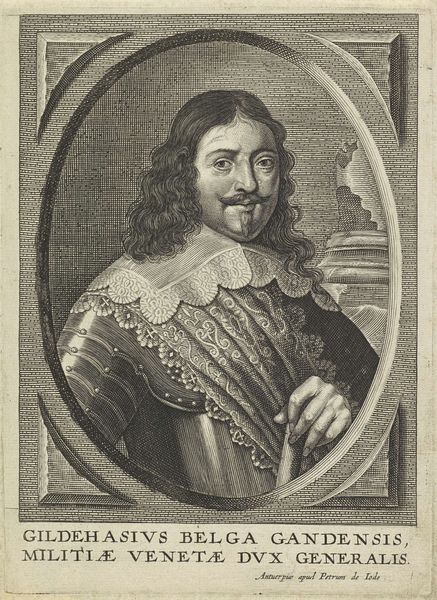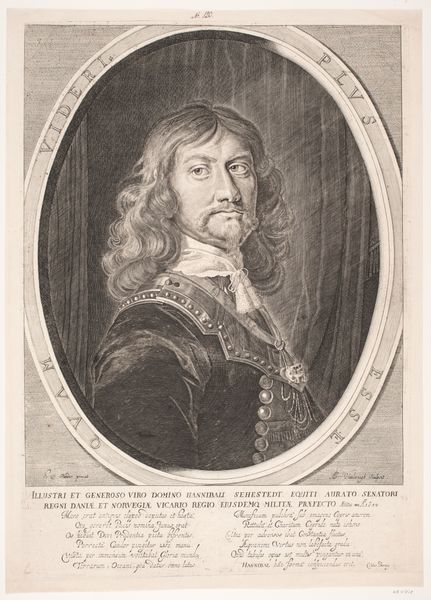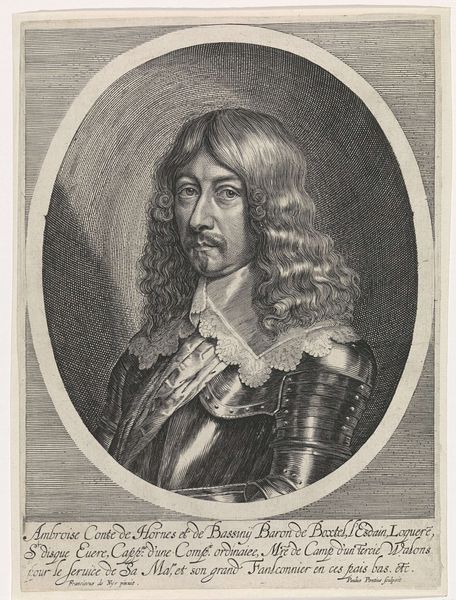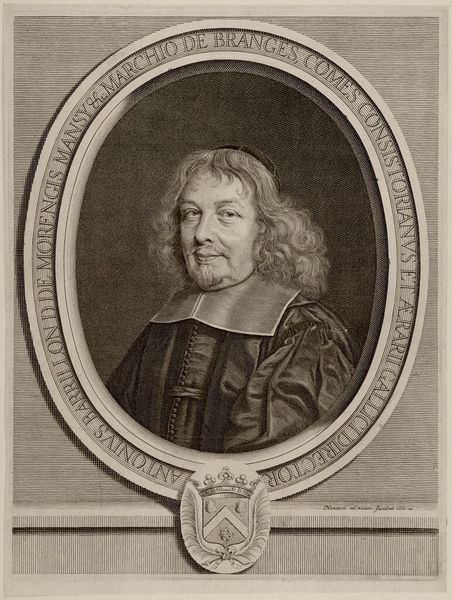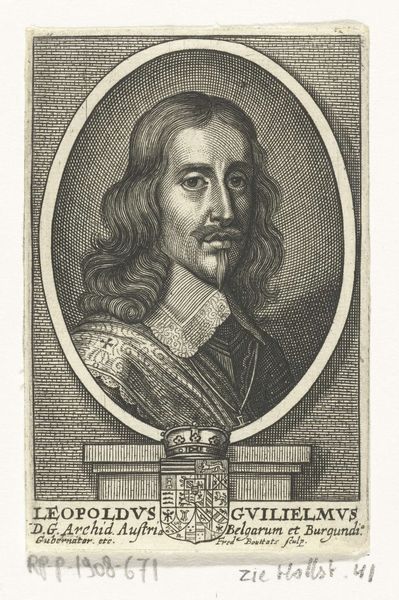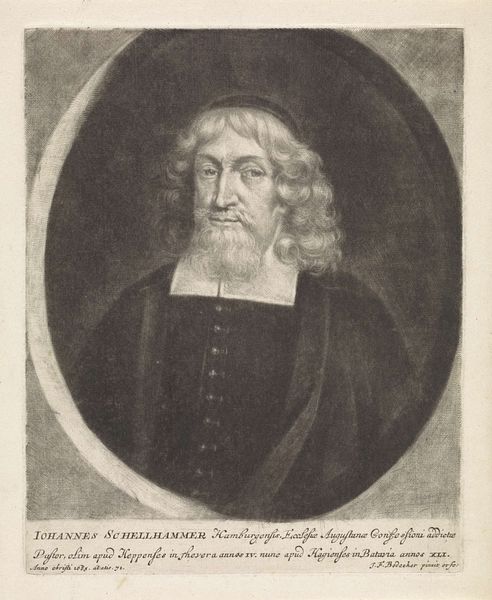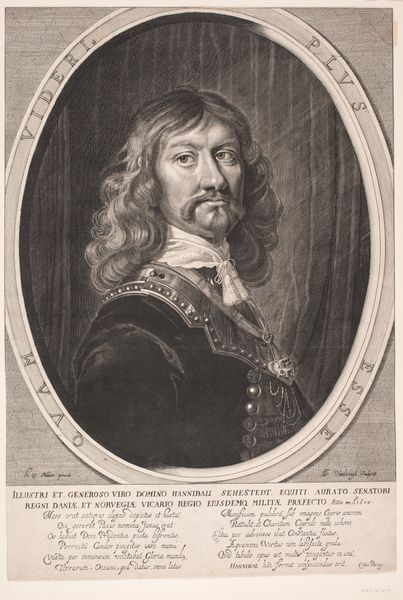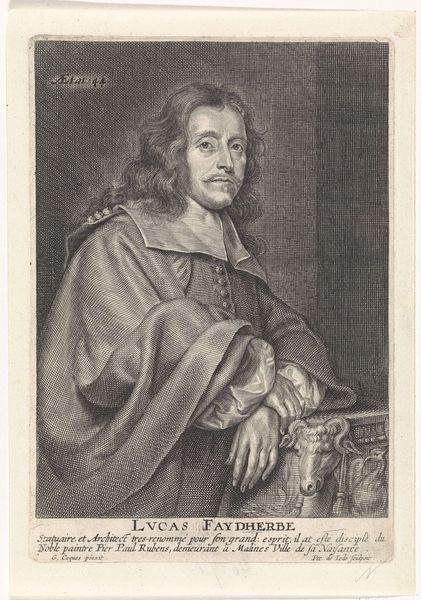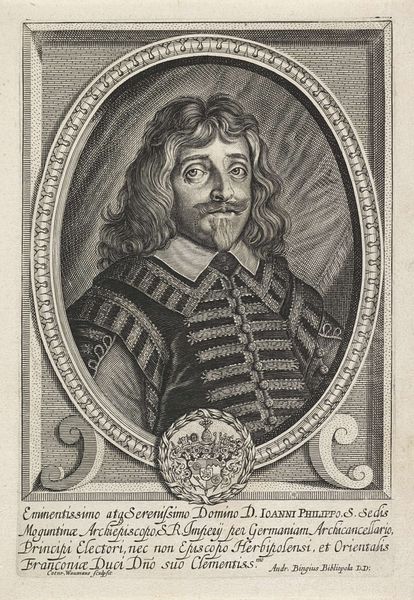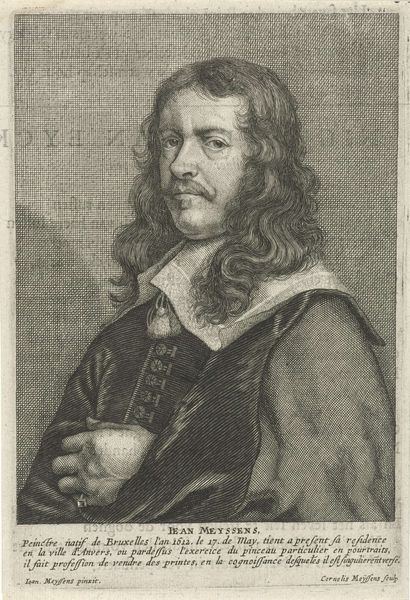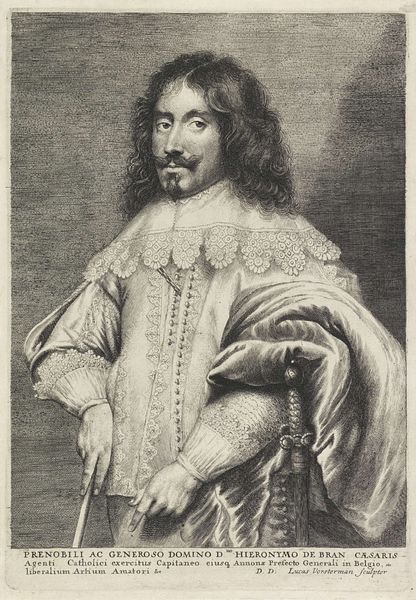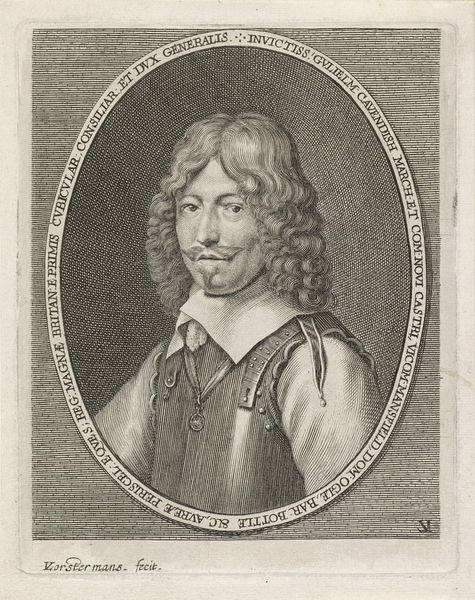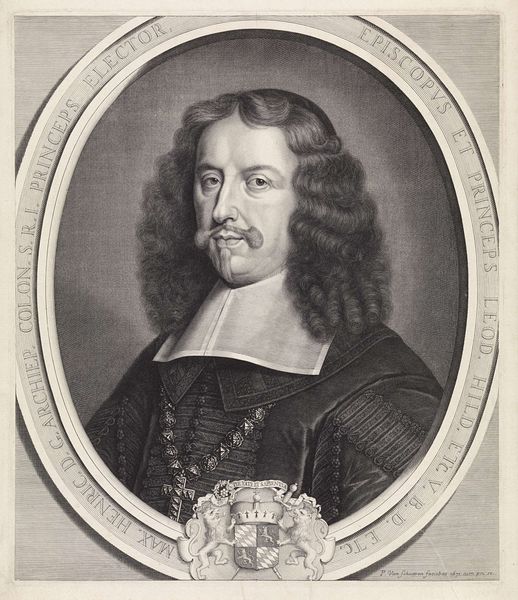
Portret van Johann Philipp von Schönborn, aartsbisschop van Mainz 1658 - 1677
0:00
0:00
engraving
#
portrait
#
baroque
#
portrait drawing
#
engraving
Dimensions: height 305 mm, width 220 mm
Copyright: Rijks Museum: Open Domain
Curator: Here we have a portrait of Johann Philipp von Schönborn, Archbishop of Mainz, created between 1658 and 1677. The artist was Wallerant Vaillant, and this work is an engraving. Editor: There's something intensely commanding about his gaze. Even with the softness of the engraving, the figure radiates power. And the details on that coat, look at the sheer abundance of decoration. Curator: Exactly. As Archbishop and a Prince-Elector of the Holy Roman Empire, Schönborn held immense political and religious influence. Vaillant's portrait captures this authority, reflecting the cultural prominence of the Church. Consider the patronage networks that shaped Vaillant’s career; his artistic choices, like the Baroque flourishes, aimed to please powerful clients such as Schönborn. Editor: Right. And consider the work of an engraver, the specialized labor and the physical production that brings a unique texture, all those tiny etched lines building up form. The medium isn’t just neutral; the act of engraving transforms the original design and informs the final image. It speaks to me of labor and access to imagery in those times. It must have taken quite a time to make! Curator: Indeed. Engravings like this circulated widely, establishing Schönborn’s image and reinforcing his status. The text inscribed below the portrait further emphasizes his titles and domains, acting as a visual declaration of his importance. The material existence of such objects—their dissemination, their ownership, the economies around them—offers vital clues about social relationships. Editor: Absolutely. The printmaking process itself, with its meticulous craftsmanship, mirrors the rigid hierarchies of the era, making the engraving function almost like propaganda through sheer production effort and widespread access to the portrait. Curator: So, considering its historical and social context, we see it's not just a picture but a strategic assertion of power and position. Editor: Looking at the materials and production offers an essential counterpoint to thinking about historical image building, yes? Curator: Precisely! It allows a richer understanding, adding depth to a face from the past.
Comments
No comments
Be the first to comment and join the conversation on the ultimate creative platform.
